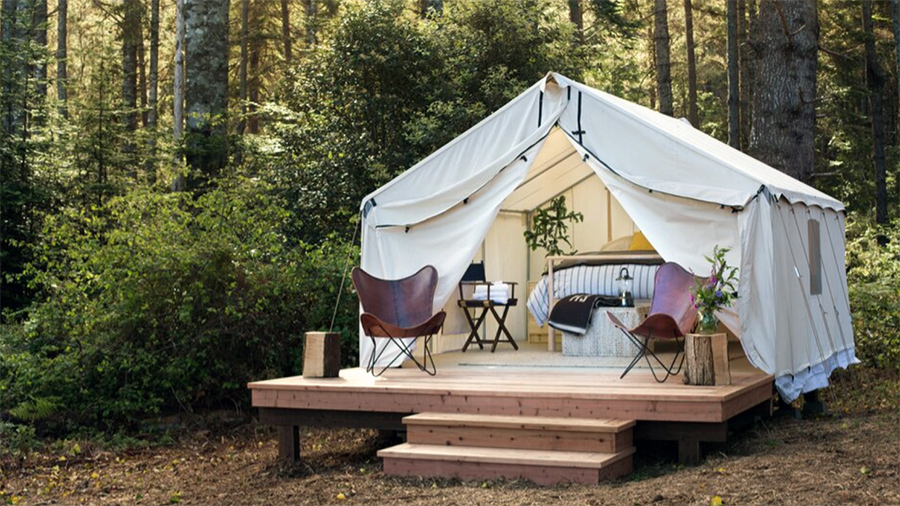Kampgrounds of America, Inc.’s (KOA) annual Camping and Outdoor Hospitality Report identifies continued demand for outdoor travel, including 79 percent of travelers planning to incorporate forest immersion, meditation, yoga and/or mindful walks into their trips in an effort to “slow down.”
Other key findings from KOA for the 2024 outdoor travel season include the following:
- Top travel goals for 2024 include slowing down and enjoying experiences (57 percent), travel experiences that allow campers to recharge (50 percent), having a variety of experiences (41 percent), checking off several items on a travel bucket list (37 percent) and making spontaneous plans (34 percent).
- Campers are highly interested in seeing natural attractions and indicated their top travel experiences for the year include natural events (50 percent), food tourism (31 percent), visiting small towns (29 percent), and combining work and leisure travel (25 percent).
- More than half of campers reported they are more likely to continue camping, a 15 percent increase over 2023.
KOA first started publishing reports on outdoor travel in 2014. “Through our decade of research, we’ve seen camping evolve from simply being considered an outdoor activity to becoming a formidable segment of the travel marketplace,” stated Toby O’Rourke, president and CEO of KOA. “Despite all the changes over the last ten years, one thing remains constant: even more people see the importance of connecting with nature. Heeding the call, outdoor hospitality offers countless ways for a broad range of travelers to have one-of-a-kind experiences with those who matter most.”
A Decade of Transformation
KOA’s study shows that in the last decade, the number of camping households increased by 23 percent, and active camping households surged by 68 percent. Camper demographics also became younger and more diverse during that time.
Before 2019, camping brought in more than two million new households annually and since the pandemic, the number has grown significantly, averaging 4.4 million new campers annually.
Key shifts and findings over the last decade include:
- Glamping emerged as a new camping experience, bringing 15.7 million participants into outdoor hospitality in the past five years.
- Since 2014, there has been a 98 percent increase in households that camp three or more times annually.
- Close to one-half of campers in the last two years are under 35 compared to 30 percent campers in 2014.
- 39 percent of campers are non-white versus 23 percent ten years ago, with a 54 percent increase in camping by people of color.
The KOA Camping and Outdoor Hospitality Report also details how perceptions in outdoor hospitality have evolved including:
- The human element factors significantly, with 87 percent of leisure travelers responding that outdoor hospitality must incorporate human interaction.
- Travelers define outdoor hospitality as a majority of time spent outdoors (50 percent), the presence of camping amenities, including fire pits and outdoor seating areas (48 percent) and accommodations that reflect traditional camping amenities such as tents or RVs be present (43 percent).
- Though the Oxford English Dictionary added the term “glamping” in 2016, glamping was not a household word in 2014 and, in 2017, a KOA survey found that just three out of 10 campers were aware of the word. The past few years have shown a boom in the trend.
“As guest expectations have evolved over time, so has our approach to the outdoor hospitality experience,” said O’Rourke. “KOA is proud to be a leader in outdoor hospitality, offering a unique blend of outdoor activities with the comfort and services of traditional hospitality at our more than 500 campgrounds in North America.”
Survey Methodology
KOA’s annual Camping and Outdoor Hospitality Report results come from 4,100 surveys completed among a random sample of 2,900 U.S. consumers and 1,200 Canadian households. To read the full report, go here.
Image courtesy Mendocino Grove














